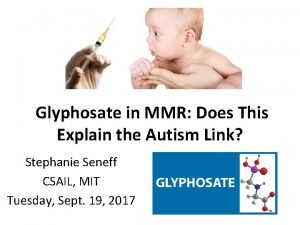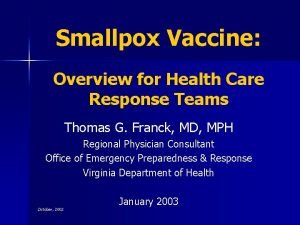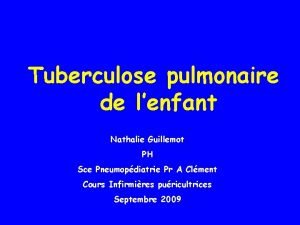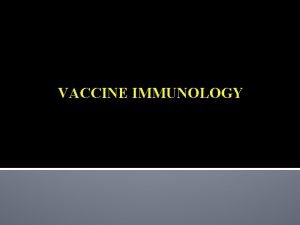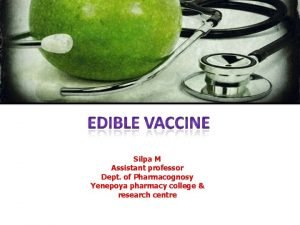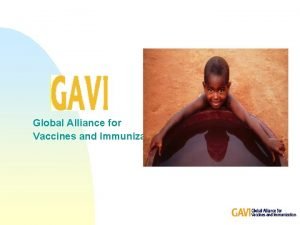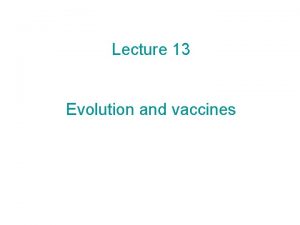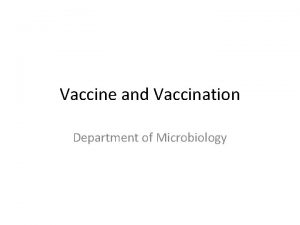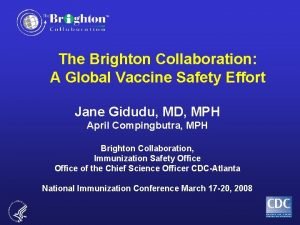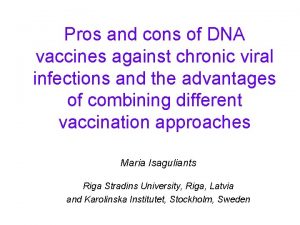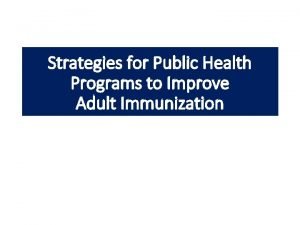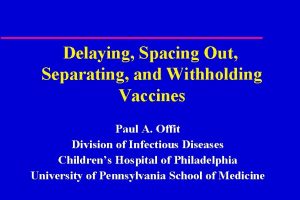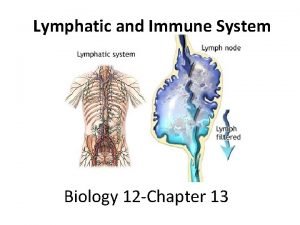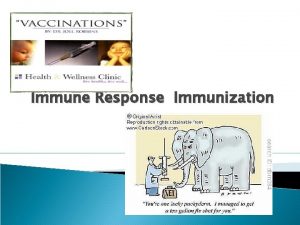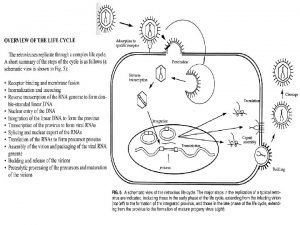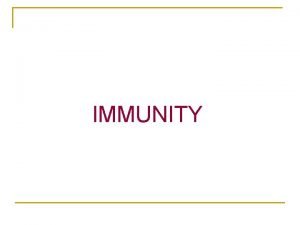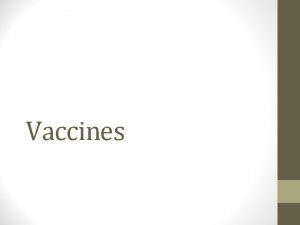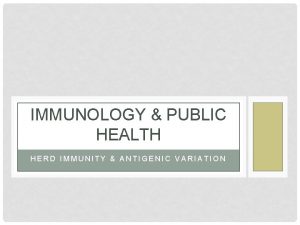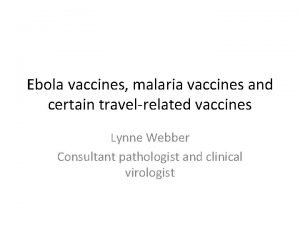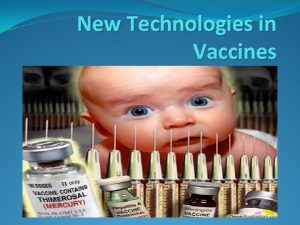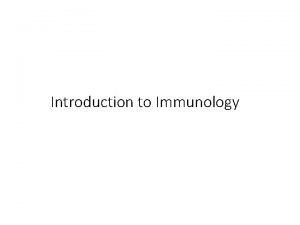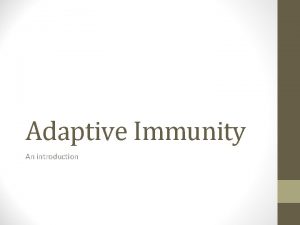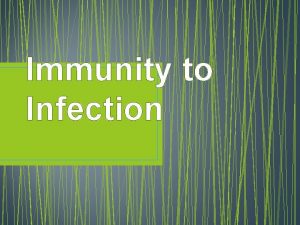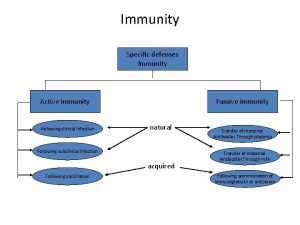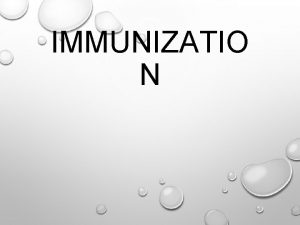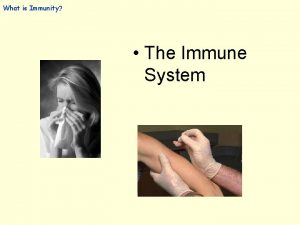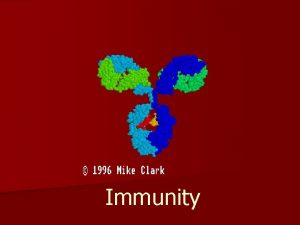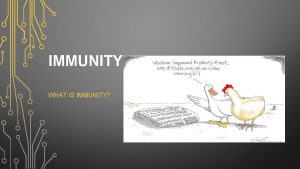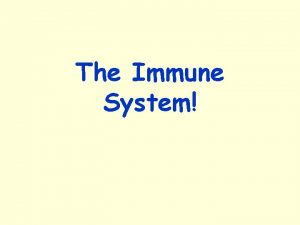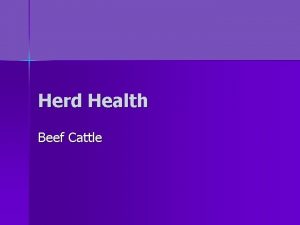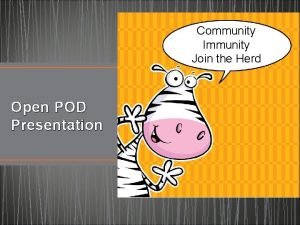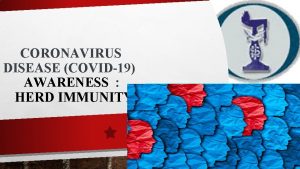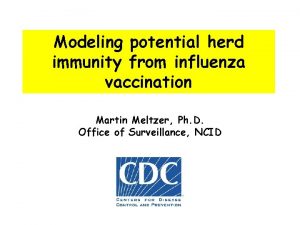The importance of vaccines in developing herd immunity





























- Slides: 29

The importance of vaccines in developing herd immunity to COVID-19 Richard H. Scheuermann, Ph. D La Jolla Campus Director & Director of Informatics

The importance of vaccines in directly controlling the COVID-19 outbreak Richard H. Scheuermann, Ph. D La Jolla Campus Director & Director of Informatics

OVERVIEW J. Craig Venter Institute A not-for-profit organization, founded in 1992, devoted to research in genomics and related fields, including infectious diseases Labs in Rockville, Maryland La Jolla, California. 200 staff total, both wet lab and bioinformatics scientists; operating budget of $37 million/year, 90% federal funding Focused on enhancing the fundamental understanding of life and thereby improving human health and health of the environment 3

2019 Novel Coronavirus Outbreak (SARS-Co. V-2) § December 31, 2019 - Cluster of pneumonia cases with unknown cause in Wuhan China reported to the World Health Organization (WHO) § January 7, 2020 – novel coronavirus (n. Co. V) isolated § January 12, 2020 – first genome sequence release to public § January 20, 2020 – first U. S. case in Washington State § As of October 20, 2020 (WHO): – >40 million confirmed cases globally – >1. 1 million deaths globally 4

Global COVID cases and deaths 5 https: //covid 19. who. int

Severe Acute Respiratory Syndrome Coronavirus - 2 6 www. viprbrc. org

Epidemiology and the Basic Reproduction Number (R 0) § Epidemiology - the branch of medicine which deals with the incidence, distribution, and possible control of diseases and other factors relating to health § Basic Reproduction Number (R 0): – the expected number of cases directly generated by one case in a population where all individuals are susceptible to infection – where no other individuals are infected or immunized (naturally or through vaccination) – in the absence of any deliberate intervention in disease transmission 7

Basic Reproduction Number (R 0) § Basic Reproduction Number (R 0): – the expected number of cases directly generated by one case in a population where all individuals are susceptible to infection – where no other individuals are infected or immunized (naturally or through vaccination) – in the absence of any deliberate intervention in disease transmission. R 0 = 2 8 R 0 = IPT • I is the number of interactions/unit time (e. g. 4/day) • P is probability that interaction results in transmission (e. g. 10%) • T is the infectious period (5 days)

Effects of R 0 on case numbers 9 R 0 = 2 10, 000 => 20, 000 => 40, 000 => 80, 000 (150, 000 cumulative) R 0 = 1 10, 000 => 10, 000 (40, 000 cumulative) R 0 = 0. 8 10, 000 => 8, 000 => 6, 400 => 5, 120 (29, 520 cumulative)

R 0 for human viruses 10 https: //en. wikipedia. org/wiki/Basic_reproduction_number

Effective Reproduction Number (Re) § Effective Reproduction Number (Re): – the number of cases generated in the current state of a population R 0 = IPT • I is the number of interactions/unit time (e. g. 4/day) • P is probability that interaction results in transmission (e. g. 10%) • T is the infectious period (5 days) 11

Controlling Re with contact tracing, testing, and quarantine Re = IPT • I is the number of interactions/unit time (e. g. 4/day) • P is probability that interaction results in transmission (e. g. 10%) • T is the infectious period (5 days => 1 day) • Re (2 => 0. 4) 12

Controlling Re with social distancing Re = IPT • I is the number of interactions/unit time (e. g. 2/day) • P is probability that interaction results in transmission (e. g. 10%) • T is the infectious period (5 days) • Re (2 => 1. 0) 13

Controlling Re with social distancing and physical barriers Re = IPT • I is the number of interactions/unit time (e. g. 2/day) • P is probability that interaction results in transmission (e. g. 5%) • T is the infectious period (5 days) • Re (2 => 0. 5) 14

Controlling Re with antiviral drugs Re = IPT • I is the number of interactions/unit time (e. g. 4/day) • P is probability that interaction results in transmission (e. g. 10%) • T is the infectious period (2. 5 days) • Re (2 => 1. 0) 15

Problems with these approaches § Contact tracing is very labor intensive and doesn’t scale to current incidence (~55, 000 cases/day in US) § People are tired of social distancing § People don’t want to wear masks for the rest of their lives § Antiviral drugs are only being used to treat patients already infected § Solution: herd immunity? 16

Herd immunity § Also known as indirect protection, community immunity, or community protection § Refers to the protection of susceptible individuals against an infection when a sufficiently large proportion of immune individuals exist in a population § In other words, the inability of infected individuals to propagate an epidemic outbreak due to lack of contact with sufficient numbers of susceptible individuals § Stems from the individual immunity that may be gained through natural infection or through vaccination Omer SB, Yildirim I, Forman HP. Herd Immunity and Implications for SARS-Co. V-2 Control. JAMA. Published online October 19, 2020. doi: 10. 1001/jama. 2020. 20892 17

Re and herd immunity R 0 = 2 Re = 1 18 R 0 = IPT • I is the number of interactions/unit time (e. g. 4/day but only 2 susceptible) • P is probability that interaction results in transmission (e. g. 10%) • T is the infectious period (5 days)

Re and herd immunity R 0 = 2 Re = 1 R 0 = IPT • I is the number of interactions/unit time (e. g. 4/day but only 2 susceptible) • P is probability that interaction results in transmission (e. g. 10%) • T is the infectious period (5 days) Herd immunity threshold = 1 – 1/R 0 = 50% 19

R 0 for human viruses 20 https: //en. wikipedia. org/wiki/Basic_reproduction_number

Re and herd immunity R 0 = 5 Re = 1 R 0 = IPT • I is the number of interactions/unit time (e. g. 4/day) • P is probability that interaction results in transmission (e. g. 25%) • T is the infectious period (5 days) Herd immunity threshold = 1 – 1/R 0 = 80% 21

To achieve herd immunity via infection 22 § @ R 0 = 2 (herd immunity threshold of 50%) – 330 million US population => 165 million immune – 7. 8 billion world population => 3. 9 billion immune § Case fatality rates (CFR) – US: 8. 19 million cases & 220 thousand deaths => 2. 68% – Worldwide: 40. 2 million cases => 1. 12 million deaths => 2. 79% – Depending on undetected asymptomatic infection, the CFR may be lower § To achieve herd immunity at R 0 = 2 – US: 4. 4 million deaths – Worldwide: 560 million deaths § Infection-induced herd immunity is not realistic at this point to control the pandemic

To achieve herd immunity via vaccination § @ R 0 = 2 (herd immunity threshold of 50%) – US: 165 million vaccine doses – Worldwide: 3. 9 billion vaccine doses § Assumes vaccines are 100% effective § Ongoing cases and deaths – US: ~1000 deaths/day – Worldwide: ~5000 deaths/day § If R 0 is closer to 5, we will need ~90% vaccine coverage 23

Courtesy of Dr. Antony Fauci

Courtesy of Dr. Antony Fauci

Courtesy of Dr. Antony Fauci

Courtesy of Dr. Antony Fauci

Vaccines § ~200 vaccine candidates are currently under development § 5 vaccines are in Phase 2/3 efficacy studies with results expected soon § The US Food and Drug Administration (FDA) guidance set as an expectation for licensure that a COVID-19 vaccine would prevent disease or decrease its severity in at least 50% of people who are vaccinated § Safety should be assessed in at least 15, 000 people vaccinated followed up for time periods sufficient to detect most safety issues (e. g. , 2 months) § Initially assessed in older individuals, people with chronic illnesses, and persons in racial/ethnic minority populations § Then assessed in children and pregnant women § Duration of immunity that is induced needs to be determined § Scaling up to produce billions of doses will be a challenge § Who should get vaccinated first? 28 Goodman JL, Grabenstein JD, Braun MM. Answering Key Questions About COVID-19 Vaccines. JAMA. Published online October 16, 2020. doi: 10. 1001/jama. 2020. 20590

QUESTIONS? 29
 Difference between acquired immunity and innate immunity
Difference between acquired immunity and innate immunity Hep b vaccines
Hep b vaccines Is glyphosate in vaccines
Is glyphosate in vaccines Freeze market
Freeze market Tuberculose transmission
Tuberculose transmission What is the difference between vaccination and inoculation
What is the difference between vaccination and inoculation Edible vaccines in pharmacognosy
Edible vaccines in pharmacognosy Edible vaccines pros and cons
Edible vaccines pros and cons Global alliance for vaccines and immunization
Global alliance for vaccines and immunization Could vaccines breed viciousness
Could vaccines breed viciousness Virulent
Virulent Stephanie seneff mit
Stephanie seneff mit Brighton collaboration levels
Brighton collaboration levels Edible vaccines pros and cons
Edible vaccines pros and cons Dna vaccines pros and cons
Dna vaccines pros and cons Www.cdc.gov/vaccines/schedules/index.html
Www.cdc.gov/vaccines/schedules/index.html Immune checkpoint inhibitors mechanism of action
Immune checkpoint inhibitors mechanism of action Spacing out vaccines
Spacing out vaccines Herd learning
Herd learning Summary of a herd of elephant flies
Summary of a herd of elephant flies Carne reidy herd
Carne reidy herd A day with nandu lesson plan
A day with nandu lesson plan What is the movement of a single caribou into a herd
What is the movement of a single caribou into a herd Herd
Herd Odibate
Odibate Chapter 13 lymphatic system and immunity
Chapter 13 lymphatic system and immunity Naturally acquired passive immunity definition
Naturally acquired passive immunity definition Do mandated reporters have immunity under canra
Do mandated reporters have immunity under canra Innate immunity
Innate immunity Local immunity ppt
Local immunity ppt


